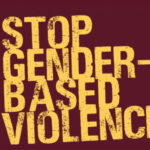The need to tackle the burden of child labour continues to grow by the day, especially with the high prevalence in some states of the country.
Many children are also continually trafficked from the rural to urban areas for child labour. The children miss out on education, a healthy childhood and also face sexual harassment and other forms of violence.
- Rabies kills 55, 000 Nigerians annually – USAID
- NIGERIA DAILY: How Illegal Arms Are Transported Daily To Northern Nigeria
A concerned parent, who wants to be identified as Maimuna, said many children are subjected to very long hours of work that take a toll on their health and wellbeing.
“I am shocked to see many children, as young as 10, working as mechanics, vulcanisers, hawkers, and as artisans under the sun all day with little or no break in between and lifting very heavy loads.
“Some of them work in households from morning till night without any breaks; are subjected to poor feeding and have no access to healthcare,” she lamented.
The United Nations Children’s Fund (UNICEF) says, child labour does mostly occur in semi-formal and informal businesses with hundreds of thousands of young domestic servants, mainly working for prosperous urban families.
“Domestic servants are the least visible category and often sexually harassed. Overall, hazardous work in fields, quarries, private households and on the streets exposes children to abuse and exploitation and poses serious threats to their health and development,” it said.
According to the 2021 Multiple Indicator Cluster Survey/National Immunization Coverage Survey Report, three out of every 10 children aged 5-17 years (32 per cent) are engaged in child labour.
This is a decrease of 19 per cent points from five years ago.
The survey said the smallest proportions of children engaged in child labour are found in Lagos (10 per cent) and Ondo (9 per cent) while the largest proportions are in Bauchi (55 per cent) and Katsina (50 per cent).
The 2017 MICS survey (MICS 5) showed that five out of 10 children were engaged in child labour in 2016.
UNICEF’s Chief of Measurement for Results (M4R) Claes Johanson, said while the decrease in child labour rate across the country is good news, the rate is not the same across all the states and thus calls for measures in addressing it.
He said there is still a prevalence in some northern states of the country.
Johanson stated this while presenting the 2021 Multiple Indicator Cluster Survey/National Immunization Coverage Survey Report (MICS 6) at a two-day media dialogue in Port Harcourt, Rivers State.
The dialogue was organised by the Child Rights Information Bureau (CRIB) of the Federal Ministry of Information and Culture in collaboration with UNICEF.
Mrs Vanessa Phala, the ILO Country Director to Nigeria, said not less than 15 million children in Nigeria are engaged in child labour, and that half of the number bear the heavy burden of hazardous work.
She said to sustain interventions, governments, social partners, the media, others need to constantly engage children to ensure sustainable policies, and implement legal requirements for the elimination of child labour through monitoring.
“There is also need to improve relevant policy frameworks and provide innovative solutions to address poverty which is the root cause of child labour and forced labour.”
Dr Chris Ngige, the Minister of Labour and Employment, called for more collaboration and partnerships to tackle child labour in Nigeria.
Speaking at a recent National Children Conference in commemoration of the 2022 World Day Against Child Labour (WDACL), he said global estimates have shown that child labour is on the rise; with an increase from 152 million to 160 million between 2016 and 2020.
“In Nigeria, child labour has become a scourge. Several children find themselves on the streets, forced to make a living, with others employed in industrial complexes and hazardous environments.
“This, of course, will most certainly have massive implications in the near future. However, as a country, we take pride in stating that considerable efforts have been made in dealing with this menace,’’ he said.
Ngige said these include the adoption and ratification of ILO Conventions 138 and 182 on Minimum Age and Worst Forms of child labour, respectively.
He said others are the passage of the Child Rights Act into law to domesticate the Convention on the Rights of the Child, with adoption by about 30 state governments.

 Join Daily Trust WhatsApp Community For Quick Access To News and Happenings Around You.
Join Daily Trust WhatsApp Community For Quick Access To News and Happenings Around You.


